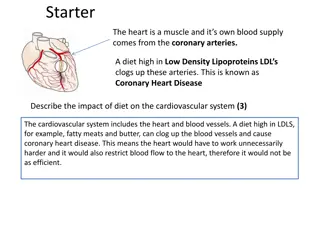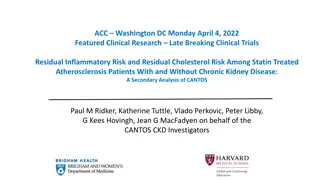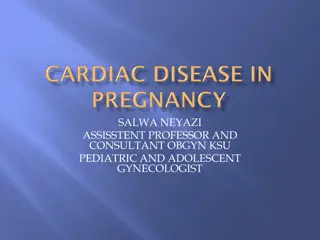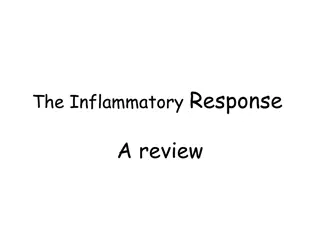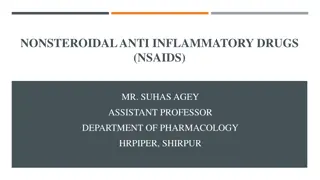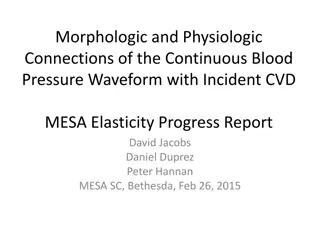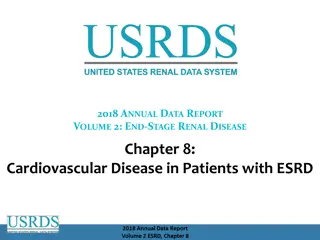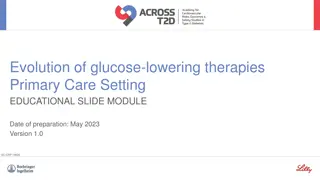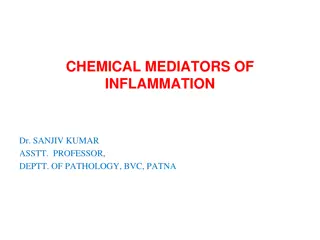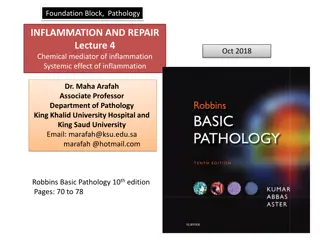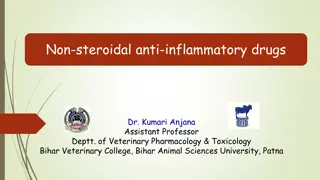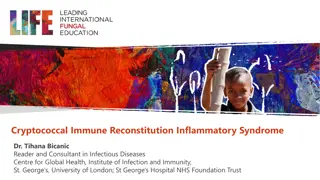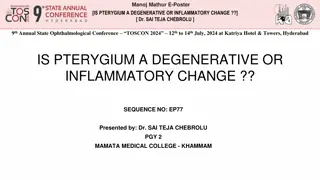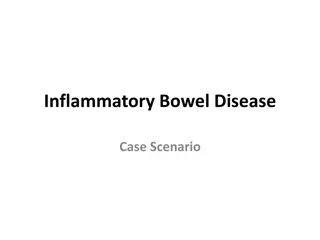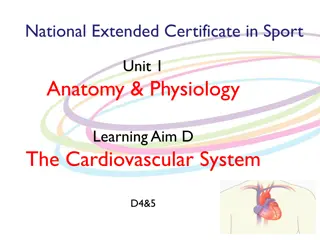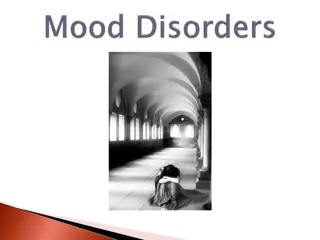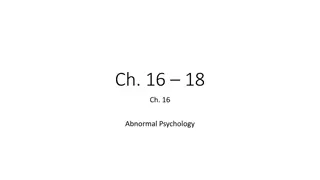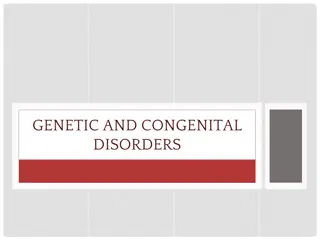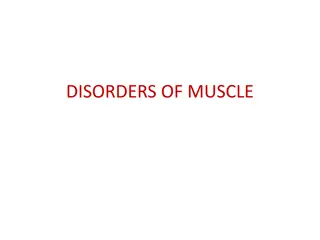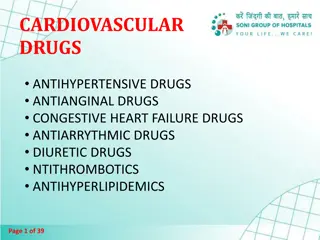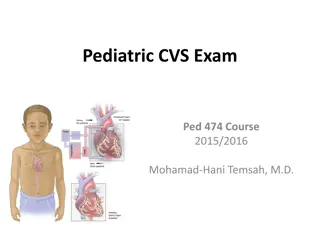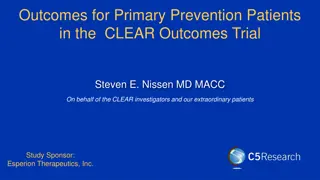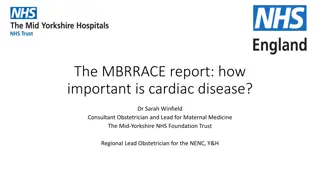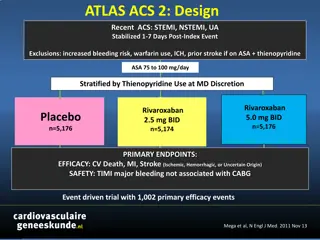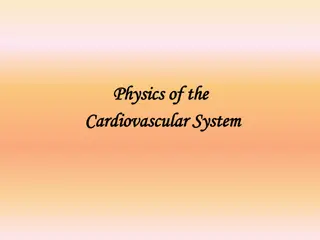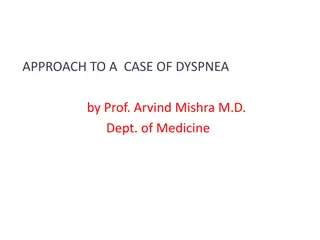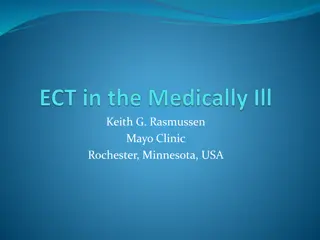Understanding Inflammatory Disorders of the Cardiovascular System
Inflammatory conditions of the heart, such as pericarditis and myocarditis, can have various causes and manifestations. Pericarditis can present as fibrinous, purulent, or hemorrhagic, each with distinct characteristics and implications. Myocarditis, on the other hand, can result from infections like parasites, leading to significant cardiac inflammation. Recognizing and understanding these inflammatory statuses are crucial for diagnosis and management in cardiovascular pathology.
Download Presentation

Please find below an Image/Link to download the presentation.
The content on the website is provided AS IS for your information and personal use only. It may not be sold, licensed, or shared on other websites without obtaining consent from the author. Download presentation by click this link. If you encounter any issues during the download, it is possible that the publisher has removed the file from their server.
E N D
Presentation Transcript
Cardiovascular system pathology By Professor Dr. jihad A. Ahmed
Inflammatory status of the heart: 1. Pericarditis Pericarditis refers to pericardium. Acute pericarditis can be classified as fibrinous, purulent or hemorrhagic, depending on characteristics of the pericardial surfaces and fluid. 1. Fibrinous pericarditis: The most common form of pericarditis, in which the normal smooth glistening appearance of the pericardial surface become replaced by a dull, granular fibrin-rich exudate. The rough texture of the inflamed pericardial surfaces produces the characteristic friction rub heard by auscultation. Microscopically the pericardial fluid in fibrinous pericarditis is usually rich in protein, and the pericardium contains primarily mononuclear inflammatory cells. inflammation of the visceral or parietal the gross and microscopic
2. Purulent pericarditis: it occurs because of bacterial infection leads to a purulent pericarditis, in which microscopically the pericardial exudate resembles pus and contains many neutrophils. 3.Hemorrhagic pericarditis: hemopericardium it occur as a result to bleeding into the pericardial space caused by aggressive infectious or neoplastic processes or coagulation defects leads to hemorrhagic pericarditis. When the blood clotted in the pericardium sac that called pericardium tamponade. Also called
4. Hydropericardium: it also called pericardial effusion is the accumulation of excess fluid within the pericardial cavity, either as a transudate or an exudate. The pericardial sac normally contains no more than 50 ml of lubricating fluid. 5. Pneumopericardium: It refers to present of air or gas in the pericardium sac.
Myocarditis Myocarditis It is an inflammation of myocardium which have many types: 1. Acute suppurative myocarditis: this found in pyemia that occurs in mastitis, metritis and joint ill. The spread by way of coronary arteries, direct extension from purulent pericarditis, endocarditis, pleuritis and pneumonia also possible, Macroscopically the heart contain abscesses with hyperemic borders, encapsulated. Microscopically the typical appearance of abscesses is seen with neutrophils, healing may occur by organization or scar formation. the abscesses may
2. Parasitic myocarditis: This type of myocarditis occur due to parasitic infection of the myocardium, many types of heartworms may cause parasitic myocarditis like Dirofilaria immitis and Hydatid cysts found in the right ventricle, also Sarcocystis tenella and Toxoplasma gondii may present in the heart muscle fibers.
Endocarditis Endocarditis is an inflammation of the inner layer of the heart (endocardium); it usually involves the heart valves. There are several ways to classify endocarditis. The simplest classification is based on cause which either depending on whether a microorganism is the source of the inflammation or not. 1. Infective Endocarditis: it is a serious infection of endocardium by microbial invasion of heart valves or mural endocardium often with destruction of the underlying cardiac tissues characteristically results in bulky, friable vegetations composed of necrotic debris, thrombus, and organisms. Although fungi, Rickettsia (agents of Q fever), and chlamydial species can cause endocarditis, the vast majority of cases are caused by extracellular bacteria. infective or non-infective,
2. Non infected endocarditis: Also, called non bacterial thrombotic endocarditis deposition of small (1 to 5 mm in diameter) thrombotic masses composed mainly of fibrin and platelets on cardiac valves. is characterized by the



